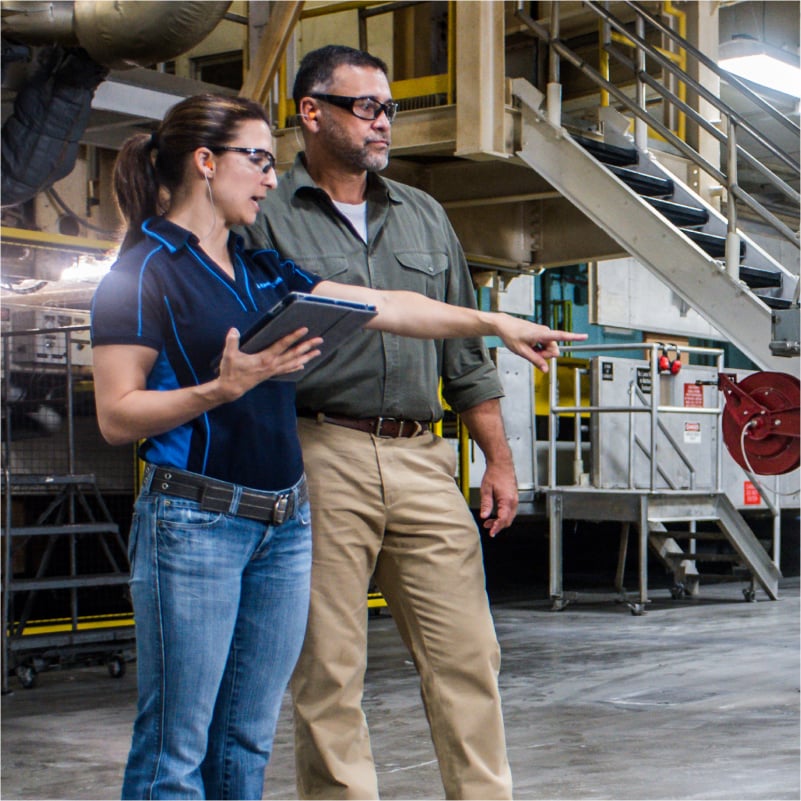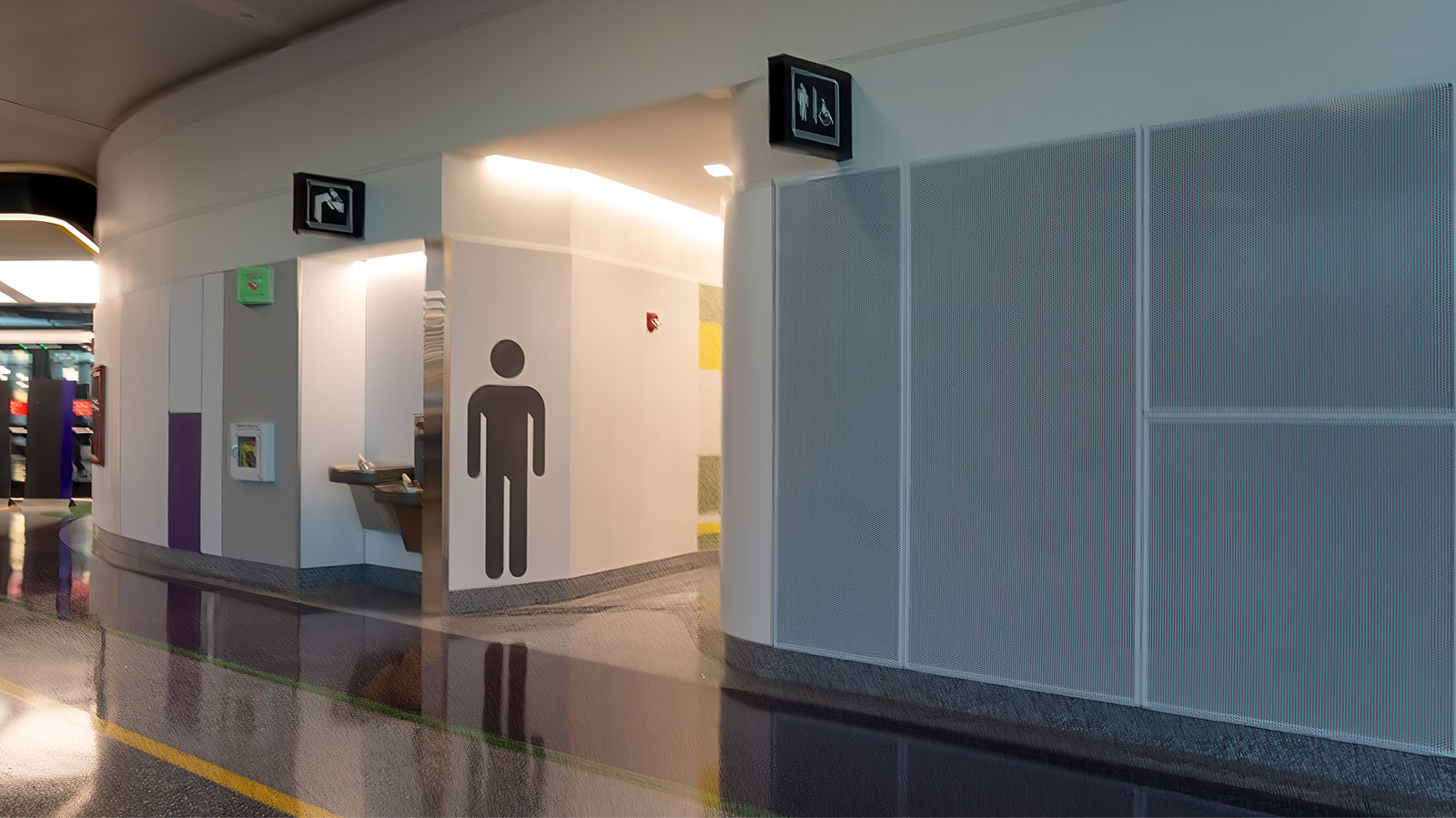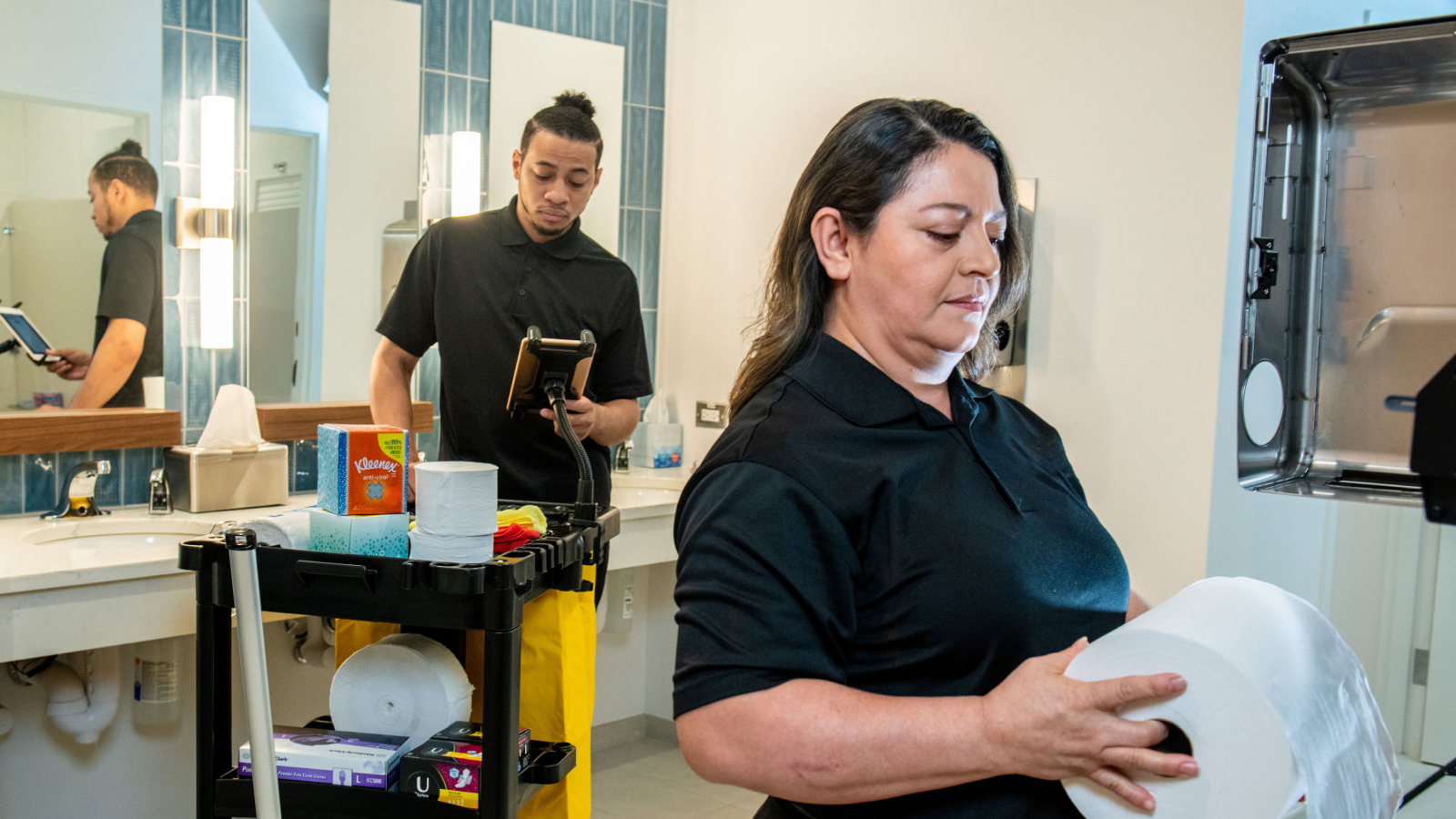Last Updated APRIL 2024
Beyond the Walk: Maximize the Impact of Your Waste Walk Insights

Utilize the tips throughout the article to elevate your waste initiatives — improving operational efficiency and achieving greater success in your organization's sustainability goals.
In this post, we'll cover:
- » Navigating Challenges in the Waste Walk Journey
- » Prioritizing Your Waste Walk Initiatives
- » Implementing Your Sustainable Action Plans
- » Five Tips to Elevate Your Waste Walk Initiatives
As you gather with your cross-functional team to reflect on the insights from your waste walk, a crucial question emerges: What comes next?
This marks the shift from observation to implementation, where your meticulous waste walk notes evolve into action plans that redefine your organization — leading to greater efficiency, waste reduction and sustainability.
A successful waste walk isn't a one-time exercise in efficiency; it's an ongoing commitment to improvement and organizational transformation. Explore how to turn waste walk insights into strategic initiatives , aligning them with broader goals, and propelling your organization toward more sustainable practices.
Navigating Challenges in the Waste Walk Journey
Initiating waste walks is a strategic leap toward organizational improvement, but the journey from intention to impactful results is riddled with challenges. Recognizing the stumbling blocks is crucial for making necessary corrections and ensuring the long-term success of your larger organizational goals.
Lack of Senior Leadership Commitment:
When high-level leaders are not actively engaged in the waste walk process from start to finish, it sends a signal
that the initiative lacks organizational priority. Without active top-down support, there's a risk of maintaining
the status quo. It is imperative to involve senior leaders in the waste walk process, not just as observers but as
committed participants.
Lack of Follow-Through with Action Plans:
It is not uncommon for organizations to conduct a waste walk, identify areas for improvement, and then struggle to
implement the necessary changes. A waste walk isn't a quick fix. It's a journey that demands commitment toward
transforming into a Lean, agile, and sustainable organization over time.
The true challenge arises after the walk, where the success of your initiatives hinges on meticulous preparation,
effective communication, organizational transparency, and prioritization of action plans. Rest assured; we've got
you covered on how to move forward.
Post-Walk Debrief — Prioritizing Your Waste Walk Initiatives
Post-walk, convene with your cross-functional team to share observations and identify your top areas for improvement. Evaluate each opportunity based on its potential impacts on operational efficiency, customer satisfaction, and cost reduction.
When deciding on prioritization, consider the feasibility and resources needed to implement each improvement plan, and how they ladder up with your organization’s strategic objectives.
As discussed in the previous article, Mastering the Art of Waste Walks: From Preparations to Direct Observations , ensure your waste walk is linked to specific business objectives to support those initiatives with the greatest organizational impact.
Consider targeting wastes with quick-win potential to inspire your team for future improvement projects. A little momentum goes a long way.
“Don’t forget to leverage your organization’s internal expertise. If you have in-house experts in waste and recycling, lean on them...These experts can work directly with procurement to manage recycling relationships and outlets.”
Ashley Davis,
Global Sustainability Manager, Kimberly-Clark Professional
For organizations new to a Lean environment, focusing on a smaller area of operation can yield more impactful results than addressing the entire value stream at once. This can act as a training exercise to show stakeholders the value of moving toward agile practices and how that inherently leads to greater sustainability.
With this focused approach set in motion, let's move on to the practical steps of executing your waste reduction strategies.
Implementing Your Sustainable Action Plans
Envision action plans as vital links transforming observations into tangible results. Set clear goals, scope and timelines, transparently communicating the initiative's goals and benefits to relevant stakeholders — a key principle of a Lean environment.
Break down larger action plans into smaller, manageable tasks with clear responsibilities.
| » Type of waste and its location | » Required tasks |
| » Priority number | » Owners of each task |
| » Any EHS concerns | » Deliverable dates |
Empower task owners with training to ensure they understand and can execute the new standards and processes expected of them. Set up key metrics to monitor your progress, gauging impact before and after implementation.
Regularly assessing your progress against these key metrics not only validates the effectiveness of your tactics, but also uncovers areas for improvement that might have gone unnoticed the first time. This continuous monitoring ensures your initiatives evolve as your organization requires it.
Meticulously record and standardize these process refinements, including updating standard operating procedure (SOP) documents to accurately show the current reality. Ensure that the lessons learned from each waste walk are incorporated into organizational knowledge, creating a foundation for continuous improvement and a culture of learning.
“There are potential opportunities to receive revenue to help defray waste management fees. For example, if you’re using many different polymers at your site, a waste consultant can help determine if your waste has value to a resin producer who can sell used materials into injection molding.”
Ashley Davis,
Global Sustainability Manager, Kimberly-Clark Professional
Five Tips to Elevate Your Waste Walk Initiatives
Whether you're a seasoned professional or new to the process, these five insights can elevate your waste walk initiatives, maximizing the impact of your sustainability efforts.
Train leaders first
Leaders need to understand and champion these changes to ensure effective implementation. Without their commitment to the process, Lean initiatives will only be short-lived exercises.
Share recommendations before implementation
Before action plans are put in place, seek feedback from relevant stakeholders to optimize your initiatives. This fosters a sense of ownership and increases the likelihood of successful implementation.
Prioritize quick wins
Prioritizing waste(s) that can be easily addressed motivates the team for future improvements. Quick wins generate positive momentum and demonstrate the tangible benefits of waste reduction.
Link action plans to organizational goals
Ensure each plan aligns with broader organizational initiatives and KPIs, guaranteeing that waste reduction efforts contribute meaningfully to the overall success and sustainability of the organization.
Celebrate both successes and failures
Not every initiative will be perfect from the onset. Viewing each action as a step forward in your sustainability journey, whether it succeeds or fails, promotes a culture of continuous improvement.
Building the Foundation for Long-Term Impact
Waste walks offer leaders a unique opportunity to gain firsthand insights into the intricacies of their organization's daily operations. Prioritizing and implementing action plans is not the end, but the beginning of a continuous cycle of improvement.
Commitment to monitoring, evaluation, and refinement is key for long-term success. These best practices will ensure that each waste walk contributes significantly to positive, lasting impacts on processes and results for a more sustainable tomorrow.

Mastering the Art of Waste Walks
Are you looking to improve efficiency and drive waste reduction goals forward? Discover the power of waste walks and how to navigate this strategic exercise in efficiency — from preparations to observations.





















